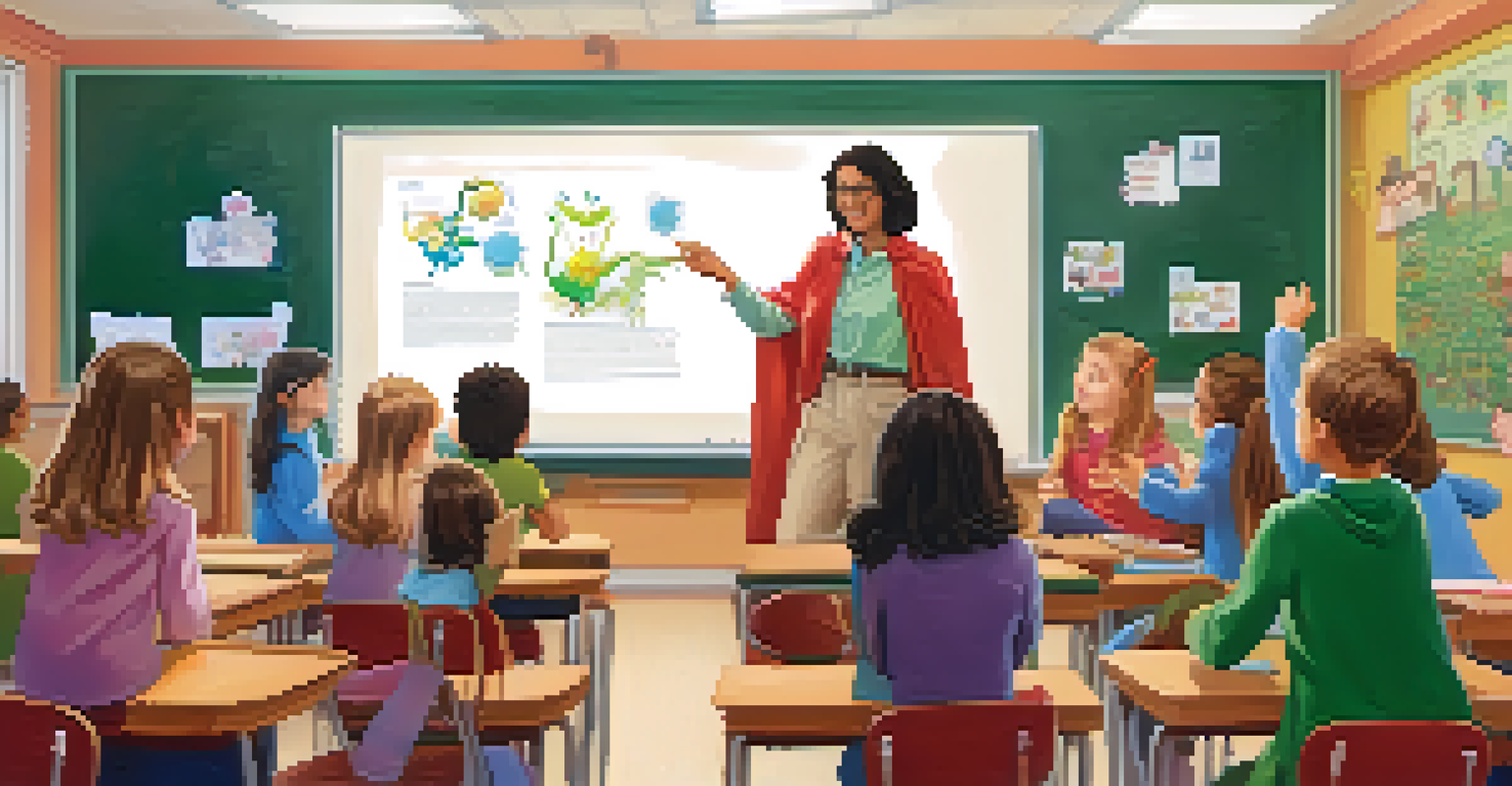Transmedia Learning in the Classroom: Best Practices

Understanding Transmedia Learning in Education
Transmedia learning is an innovative approach that uses multiple platforms to enhance educational experiences. It allows students to engage with content across various mediums, such as texts, videos, and interactive elements. This method mirrors how we consume information in our daily lives, making learning more relevant and engaging.
The great aim of education is not knowledge but action.
By leveraging different media, educators can cater to various learning styles, increasing accessibility for all students. For instance, a history lesson might include reading a textbook, watching a documentary, and participating in a virtual reality experience. This variety can ignite curiosity and foster deeper understanding.
Incorporating transmedia learning into the classroom not only enriches student engagement but also encourages critical thinking. As students navigate different platforms, they learn to synthesize information from various sources, a crucial skill in today’s information-rich world.
Creating a Cohesive Transmedia Experience
To effectively implement transmedia learning, it's essential to create a cohesive experience across all platforms. This means ensuring that each medium contributes to the overall learning objective and supports one another. A well-structured narrative or theme can help unify the different elements.

For example, if you're teaching a unit on ecosystems, you might use a combination of articles, videos, podcasts, and interactive simulations. Each piece should build on the others, allowing students to explore the topic from multiple angles and deepen their understanding. This interconnectedness can enhance retention and engagement.
Engage Students Through Multiple Mediums
Transmedia learning enhances student engagement by allowing them to interact with content across various platforms, catering to diverse learning styles.
Educators should also consider the pacing of content delivery. Gradually introducing different mediums can help maintain interest and prevent overwhelm. By guiding students through the transmedia experience, teachers can foster a more immersive learning environment.
Engaging Students with Interactive Content
One of the most effective ways to implement transmedia learning is through interactive content. Students are more likely to engage deeply when they can actively participate in their learning. This might include online quizzes, collaborative projects, or even gamified elements that add a playful aspect to the lesson.
Storytelling is the most powerful way to put ideas into the world today.
For instance, using a game-based platform to teach math concepts can make learning feel less like a chore and more like a challenge. Students can practice their skills in a fun environment that encourages friendly competition and collaboration. This not only boosts motivation but also enhances their understanding.
Moreover, interactive content can facilitate immediate feedback, allowing students to see their progress in real-time. This kind of engagement helps learners take ownership of their educational journey, leading to greater investment in their success.
Incorporating Storytelling into Learning
Storytelling is a powerful tool in transmedia learning that captivates students’ imaginations. By framing lessons within a narrative, educators can create a context that makes information more relatable and memorable. Engaging stories can connect abstract concepts to real-world scenarios, enriching the learning experience.
For example, a science lesson on chemical reactions could be presented through a story about a superhero who uses science to save the day. This narrative approach not only captures students' interest but also helps them understand complex concepts in a way that feels personal and relevant.
Interactive Content Boosts Learning
Incorporating interactive elements like games and quizzes fosters deeper engagement and provides immediate feedback, making learning more enjoyable.
Additionally, inviting students to create their own stories around the subject matter can foster creativity and collaboration. By becoming part of the narrative, students can explore their ideas while solidifying their understanding of the content.
Utilizing Technology for Diverse Learning
Technology plays a crucial role in facilitating transmedia learning by providing various platforms for content delivery. Tools like blogs, podcasts, and social media can be integrated into lessons to enhance student engagement. This diverse use of technology caters to different learning preferences and allows for personalized learning experiences.
For instance, students who may struggle with traditional reading can benefit from audiobooks or video content. Meanwhile, visual learners might excel with infographics or interactive simulations. By offering a range of technological resources, educators can ensure that every student finds a way to connect with the material.
Moreover, technology enables collaboration beyond the classroom. Online forums and collaborative tools can connect students with peers globally, fostering a sense of community and shared learning, no matter where they are.
Assessing Learning Outcomes in Transmedia Projects
Assessment in transmedia learning should reflect the diverse methods of engagement and content consumption. Traditional tests may not fully capture students’ understanding gained through various platforms. Instead, educators should consider alternative assessment methods, such as portfolio projects or presentations that showcase their learning journey.
For example, a student might create a multimedia project that combines video, writing, and visual elements to demonstrate their understanding of a topic. This approach not only reflects their learning but also allows for creativity and personal expression.
Reflective Practices Enhance Growth
Encouraging reflection through journals and self-assessments helps students identify their strengths and areas for improvement, promoting lifelong learning.
Additionally, incorporating peer assessments can offer valuable insights into collaboration and teamwork. Students can learn from each other’s perspectives, enhancing their comprehension and critical thinking skills while fostering a supportive learning environment.
Encouraging Reflection and Self-Directed Learning
Transmedia learning encourages students to reflect on their learning process and outcomes. By prompting students to think about what they’ve learned across various mediums, educators can help them identify strengths and areas for improvement. Reflection is key to fostering a growth mindset and encouraging lifelong learning.
For instance, asking students to keep a learning journal where they document their thoughts and experiences can facilitate this reflective process. This practice not only deepens their understanding but also cultivates metacognitive skills, enabling them to become more self-aware learners.

By promoting self-directed learning, educators empower students to take control of their educational journey. This autonomy can lead to greater engagement and motivation, as students learn to navigate their learning paths and explore topics that truly interest them.